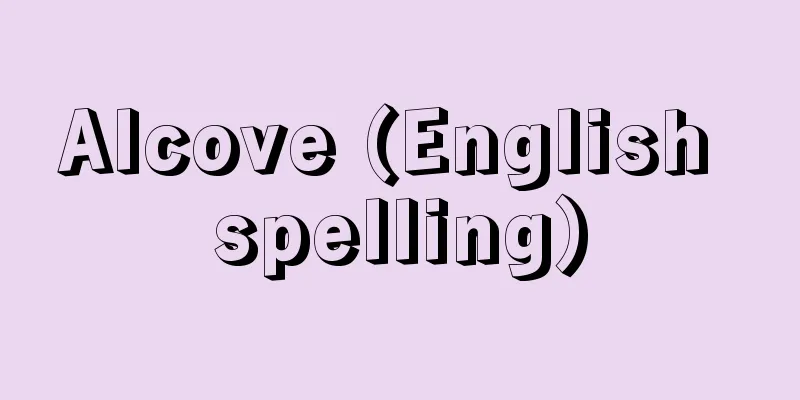Kazuo Ozaki

|
Novelist. Born on December 25, 1899 in Ujiyamada, Mie Prefecture, and raised in Shimo-Soga (now Odawara City), a suburb of Odawara, Kanagawa Prefecture. Until his grandfather's generation, generations of priests at Soga Shrine. Studied Japanese Literature at Waseda University, and was influenced by Yamaguchi Takeshi. He was deeply moved when he read Shiga Naoya's "Otsu Junkichi" at an early age, and thereafter aspired to be a writer, deepening his devotion to Shiga and consistently acting as a member of the Shiga school. He promoted the coterie magazine "Shucho" and subsequently joined many other coterie magazines. He remained silent during the heyday of proletarian literature, but visited Shiga in Nara, and eventually broke through this stagnation with the publication of Nonki Megane (Carefree Spectacles) (1933), a humorous and bitter portrayal of himself and his optimistic wife. When the book was published in 1937 (Showa 12), it won the Akutagawa Prize. Towards the end of the Second World War, he returned home due to a stomach ulcer. While recovering in Shimo-Soga, he drew up his first "Five-Year Plan for Survival" and published "Iroiro no Mushi" (1948), which became his representative work of emotional novels. His objective novel "Sumikko" (1955) is a powerful work expressing his anger at injustice. "Maboroshi no Ki" (Record of a Phantom) (1961, winner of the Noma Literary Prize) and "Mushi mo Kimo" (Insects and Trees) (1965) also contain a hidden desire for harmony between nature and humans. His autobiographical memoirs "Ano Hi Ko No Hi" (1970-1973), serialized in Gunzo, are the story of the Ozaki family as well as Waseda, and are also a requiem for his late friend, and he received the Noma Literary Prize again. In 1964 (Showa 39), he became a member of the Japan Art Academy, and in 1978, he was awarded the Order of Culture. He passed away on March 31, 1983, after a long and ripe life. [Toshiro Akano] "The Complete Works of Kazuo Ozaki, 15 volumes (1982-85, Chikuma Shobo)" ▽ "Masue Ozaki (ed.), Kazuo Ozaki: People and His Literature (1984, Nagata Shobo)" [Reference] | |Source: Shogakukan Encyclopedia Nipponica About Encyclopedia Nipponica Information | Legend |
|
小説家。明治32年12月25日、三重県宇治山田で生まれ、神奈川県小田原郊外下曽我(しもそが)(現小田原市内)で育つ。祖父の代までは代々宗我(そが)神社の神官。早稲田(わせだ)大学国文科に学び、山口剛(たけし)の影響を受ける。早くより志賀直哉(しがなおや)の『大津順吉』を読み感動、それ以後作家を志し、志賀への傾倒を深め、終始一貫志賀門の一人としてふるまう。同人誌『主潮』を推進、その後も多くの同人誌に加わる。プロレタリア文学全盛期のときは沈黙、奈良にいた志賀を訪ね、やがて停滞を打ち破って、自己と楽天的な妻をユーモアと苦みの利いた文章で描いた『暢気眼鏡(のんきめがね)』(1933)を発表、1937年(昭和12)単行本刊行の際に芥川(あくたがわ)賞を受ける。 第二次世界大戦末期に胃潰瘍(いかいよう)のため帰郷、下曽我の地で病を養いつつ、第一次「生存五か年計画」をたて、『虫のいろいろ』(1948)を発表、心境小説の代表作となる。客観小説『すみっこ』(1955)は理不尽なものへの怒りが表明されている力作。『まぼろしの記』(1961。野間文芸賞受賞)、『虫も樹(き)も』(1965)も自然と人間との合致への願望が秘められている。『群像』に連載した自伝的回想『あの日この日』(1970~73)は尾崎家物語であるとともに早稲田物語であり、亡き友への鎮魂歌ともなっていて、ふたたび野間文芸賞を受けた。1964年(昭和39)日本芸術院会員、78年文化勲章を受章。昭和58年3月31日、悠々天寿を全うして死去。 [紅野敏郎] 『『尾崎一雄全集』全15巻(1982~85・筑摩書房)』▽『尾崎松枝編『尾崎一雄 人とその文学』(1984・永田書房)』 [参照項目] | |出典 小学館 日本大百科全書(ニッポニカ)日本大百科全書(ニッポニカ)について 情報 | 凡例 |
Recommend
Igurau Mining Law - Igurau Mining Law
… The legal practices of medieval mines and the o...
Red kangaroo (English spelling) Macropus rufus; red kangaroo
A marsupial of the Macropus family. Males are 130-...
Karakul Ram - Karakul Ram
…The characteristics vary depending on the place ...
Cuore
A children's literature work by the Italian De...
cotangent
… [Trigonometric ratios] In a right-angled triang...
Iatrogenic disease
Also known as iatrogenic disease. A. Hurst (1922),...
Autoradiography Plates - Autoradiography Plates
...In order to capture the tracks accurately, the...
Oklahoma Cherokee
…This forced removal is known as the Trail of Tea...
Electrical engineering - denki kougaku (English spelling)
It is a field of engineering that deals with the ...
Community ownership - communal ownership
…Therefore, Marx not only sharply contrasted capi...
Avignon - Avignon (English spelling)
The capital of Vaucluse department in southeaster...
underground railroad
…Unlike other liberationists, he also supported t...
Azesuge - Azesuge
A perennial plant of the Cyperaceae family (APG c...
Ozzy Arch - Oji Arch
...two-core arch), Tudor arch (a crushed pointed ...
Gobaishi
Also called fushi. It is the dried galls that deve...









